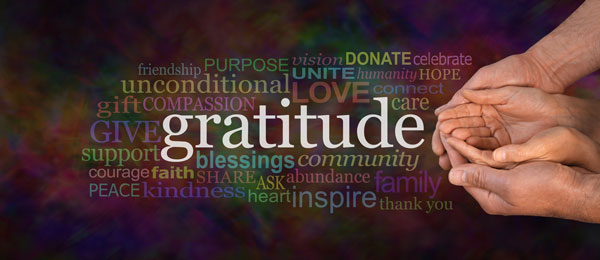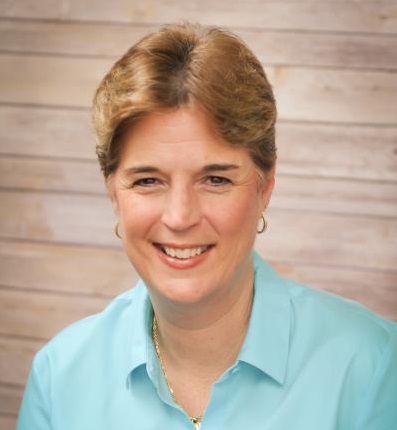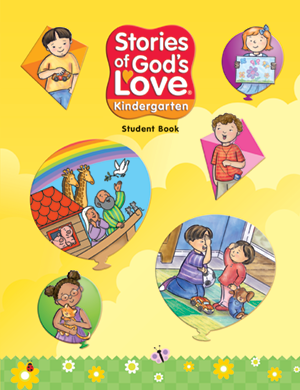As I sit at my desk, I find my head and heart full of many things I want to share with you as you prepare for another school year to begin. I am filled with abundant gratitude as I think of the unique gifts each of you brings to our Early Childhood profession within our Catholic churches and schools. The beginning of the school year gives us new opportunities and the ability to frame a fresh vision for the year. We control the environment we set for the children and families we will serve this year and every year.
I believe this school year gives us a unique opportunity to think about how we move forward from a scarcity mindset to a gratitude mindset. Not only is the shift essential for our faith formation, but in God’s grand design, he has wired our bodies to be energized by and to thrive on gratitude. Neuroscience has proven that practicing and embracing gratitude rewires the human brain (Neuro Health Association, 2020). Participants in a controlled study were divided into three groups and given journaling assignments. One-third (gratitude group) journaled everything they were grateful for daily. The second third (irritated group) journaled about everything that irritated them. The last third (neutral group) journaled about daily events but was not permitted to attach emotions to the events. At the end of the study, the gratitude group reported having a more optimistic view of life, being more physically active, and having fewer doctor visits; they also reported improved sleep, reduced anxiety, and less fatigue. The science supported the old saying, “attitude matters” (Wong, 2017). God created our bodies and souls for gratitude in his grand design. Our responsibility is to shift from a scarcity mindset to a gratitude mindset to honor God.
How do you start to ensure the shift to gratitude-focused practice for this new school year? Take care of yourself and practice self-care. This shift begins with intentionality for the practices we choose and the words we use. We need to focus on the interconnectedness of the mind, body, and soul. God never intended for us to operate them in isolation from each other. If your bucket is empty, how will you ever fill the buckets of your students and families? You need to select self-care strategies that support your mind, body, and soul, and they will not look the same as someone else’s as God created each of us to be unique in his design. Do not measure your self-care strategies against others. You do not have to do them perfectly; they can be with others or solo, but they must be what helps you. Some ideas include making time for daily prayer, exercise, learning a new skill, crafts, and endless other possibilities for activities that will fill you with joy.
How do you commit to shifting your faith practices toward gratitude? Promise yourself not to take social media too seriously, as we often see “perfect lives” posted and can become jealous of other people’s blessings. Remember that few people post the “bad stuff,” so give yourself grace not to be perfect (Jaminet, 2020). Start by looking at your life, your school, and your children, and reframe your thoughts about gratitude to what Donald Demarco says, “Gratitude is a response to a gift” (Demarco, 2002). Gifts come in various sizes, and it is up to you to recognize and honor the simple, everyday gifts that appear before you. One of the greatest gifts we experience daily is the gift from God in his only Son Jesus. This gift is ever-present, but do you stop daily and find time to be grateful for the immeasurable sacrifice of God’s only Son? One way to honor and show gratitude is to commit to friendship and service to others. When we view our students and families as gifts and are intentional with our gratitude, I promise you that our daily dose of joy will double. This strategy creates a spiritual bond with God. Let us be honest—finding things to be angry about and ungrateful for on a difficult day is much easier than calming ourselves and focusing on the opportunities and gifts which are still present even on the worst days. Demarco calls gratitude “a memory of the heart; it is an expression of love and abiding friendship” (Demarco, 2002).
Pope Francis said, “Bearers of gratitude make the world a better place” (Vatican Media, 2020). In his reflection on Saint Luke’s Gospel (17:11-19) account of the ten lepers, Pope Francis notes that Jesus invited each leper to present themselves to the priests so the priests could certify his healing. The lepers did not stay around until they completely healed because they were grateful and trusted Jesus’s ability to heal them. Pope Francis describes the moment the one leper returns to Jesus to thank him for the healing as the time the world divided into two. Pope Francis said, “The world was divided into two; those who give thanks and those who do not. Those that give thanks are given grace” (Vatican Media, 2020). How often have you been stressed and prayed for grace as an educator? Instead, try starting with gratitude to find grace next time.
I am not suggesting that this mind shift from scarcity to gratitude is easy. I am asking you to consider how your gratitude practice guides your attitude. Children do not do what we ask, they model what they see. What commitment to gratitude will you make this year? How will this shift impact the environment and lives of the students and families in your care? How might it help you?
Perhaps you could start by just practicing what the gratitude group did in the scientific study described above. Journal about the things for which you are grateful each day. Start your year with gratitude, and add to your bucket daily. I promise you this simple but challenging mind shift will allow you to have a bucket that overflows into others. Joy is on your horizon this year, controlled by your attitude fired by gratitude.
I am grateful for all our Early Childhood educators, and I promise to think of you all in my daily gratitude reflections. Thank you for what you do, and may gratitude guide your attitude this year and fill your buckets with endless joy.
Chowdhury, M. R. (2022, March 25). The Neuroscience of Gratitude and How It Affects Anxiety & Grief. Retrieved from Positive Psychology: https://positivepsychology.com/neuroscience-of-gratitude/
Demarco, D. (2002). Gratitude. Retrieved from Catholic Education Resource Center: https://www.catholiceducation.org/en/culture/catholic-contributions/gratitude.html
Jaminet, E. (2020, June 2). A Guide to Growing in Gratitude. Retrieved from Catholic Digest: https://www.catholicdigest.com/amp/faith/spirituality/a-guide-to-growing-in-gratitude/
Neuro Health Association. (2020, July 4). Neuroscience Reveals: Gratitude Literally Rewires Your Brain to be Happier. Retrieved from Neuro Health: https://nhahealth.com/neuroscience-reveals-gratitude-literally-rewires-your-brain-to-be-happier/
Vatican Media. (2020, December 30). Pope Francis: ‘Bearers of gratitude’ make the world a better place. Retrieved from Catholic News Agency: https://www.catholicnewsagency.com/news/47000/pope-francis-bearers-of-gratitude-make-the-world-a-better-place
Wong, J. B. (2017, June 6). How Gratitude Changes You and Your Brain. Retrieved from Greater Good Science Center: https://greatergood.berkeley.edu/article/item/how_gratitude_changes_you_and_your_brain
 About the Author
About the AuthorPam Perrino is an early childhood advocate, educational consultant, and former preschool teacher. She has worked as a childcare center director with the NAEYC and Professional Development Coordinator for Ohio’s Association for the Education of Young Children. Pam also serves as an adjunct professor in the Early Childhood Leadership and Advocacy program at the University of Dayton.
Product Highlight
 Stories of God's Love
Stories of God's Love
Stories of God’s Love for preschool (ages 3-4 or 4-5) and kindergarten is an easy-to-use, developmentally appropriate early childhood curriculum designed to engage children and their families in learning about their Catholic faith and in making the connections between Scripture and daily life. Designed as the foundational cornerstone for each of RCL Benziger’s basal programs; Stories of God’s Love is aligned, connected, and integrated in a way that provides for the optimum sequential growth in a child’s faith formation. In addition, the program provides the flexibility needed to customize your school's faith formation program.
Connecting with children’s social and emotional needs, the hands-on activities embedded within the curriculum are age and developmentally appropriate. Paired with the colorful illustrations, they engage the child and their family in creating a learning environment that mirrors God’s love for his children.
